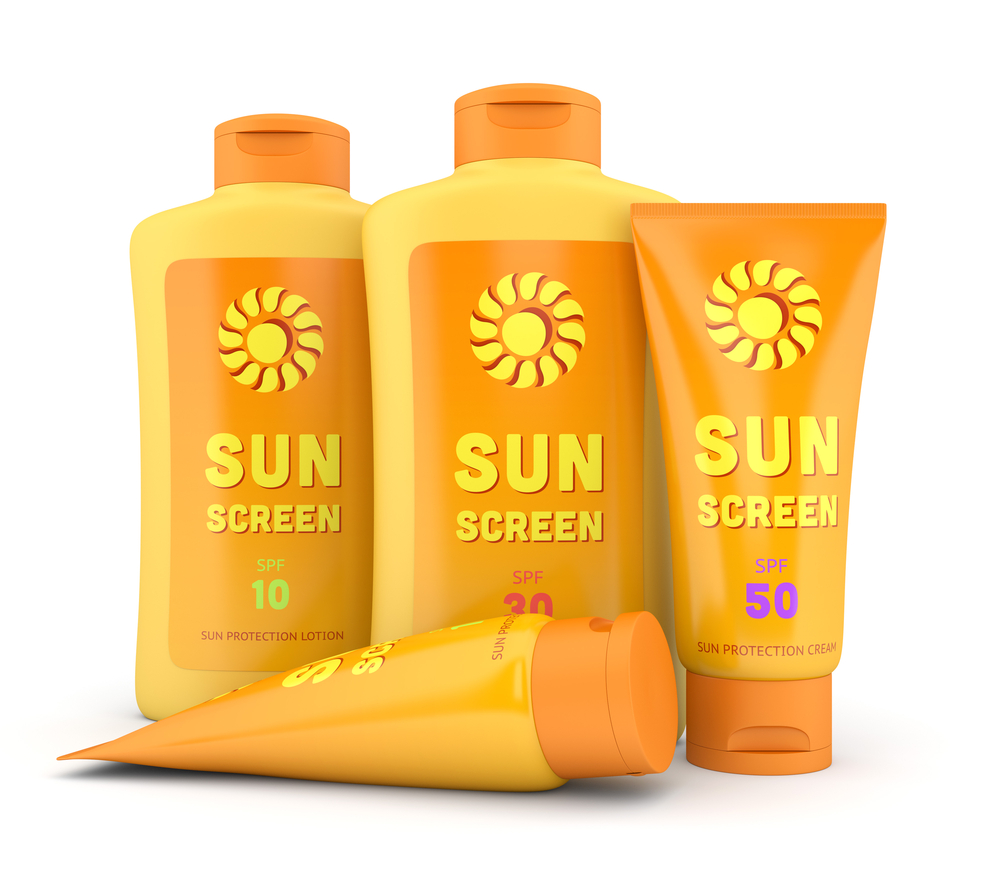SUNSCREENS
Sunscreens are substances which are applied to the skin in order to protect it from the UV rays of the sun. They do this by blocking and scattering the sun’s rays (physical blockers), or by absorbing the sun’s rays before they penetrate to the skin (chemical blockers).
Sunscreens help prevent sunburn, as well as decrease the occurrence of skin cancers. They also decrease signs of ageing which are caused by the sun (e.g. dark spots, wrinkles and decreased elasticity of the skin).

One of the most common misconceptions about sunscreens is that they need only be used by Caucasians or by people with very light complexions. While it is true that lighter skinned individuals are more likely to get skin cancer than individuals with darker skin types, persons with brown and black skin types are still prone to the effects of photo-ageing, especially irregular skin tone and hyper pigmentation (dark marks). People with darker skin types also tend to be prone to other skin conditions which can cause dark spots and patches (such as melasma, and dark marks left from pimples and insect bites). The sun’s UV rays can worsen these conditions, and so daily sunscreen use is recommended in these cases.
Choosing a sunscreen
When shopping for sunscreen there are so many options out there, that it can be confusing to try and pick one which is best for you. Before you go sunscreen shopping it is a good idea to understand what the information on sunscreen labels means.
SPF- This stands for Sun Protection Factor and is a measure of protection against sunburn-causing UVB rays. For example sunscreens with an SPF of 15 give 93% coverage from UVB rays. Sunscreens with greater numbers than SPF 15 give slightly more coverage, with SPF 30 sunscreens giving 97%.
SPF 15 is adequate for daily use for most people, but for prolonged sun exposure (e.g a day at the beach or participating in outdoor sports), an SPF of 30 or more is recommended. There are also certain groups of people, e.g those at risk for skin cancer, and those with certain skin conditions such as melasma and lupus, for whom daily use of sunscreen with SPF30 or more is usually recommended.
Broad-spectrum coverage– This means that the sunscreen protects against both UVA and UVB rays. Both UVA and UVB rays are cancer causing. UVA rays are also responsible for contributing to signs of photoageing, and UVB rays are responsible for sunburns. Therefore, in order for a sunscreen to be effective, it must be broad spectrum.
Water resistance- This is very important if you are participating in an activity in which you will be sweating profusely, or if you will be swimming.
Is there an incorrect way to use sunscreen?
Many people do not apply enough sunscreen. If enough sunscreen is not applied then the SPF of the sunscreen is decreased and the skin is protected less than it should be. One teaspoon of sunscreen should be applied to the face, and two tablespoons of sunscreen should be applied to the body.
Sunscreen should also be reapplied every hour and a half when it is being used at the beach or pool, or during an activity which involves a lot of sweating. The effect of very water resistant sunscreens only lasts for about an hour and half.
It is best to apply sunscreen at least half an hour before sun exposure?
Recently the question has arisen whether sunscreens are safe or not, and whether they can interfere with hormone production or cause other types of illnesses. The specific ingredients which have come into question are oxybenzone and retinyl palmitate. However there is no good scientific evidence that sunscreens are harmful. The good news is that there are lots of different sunscreen formulations available and so if it is your personal preference to avoid these two ingredients, there should be no shortage of options.
There is no sunscreen that blocks 100% of UV rays and so sunscreen works best when used with other sun protective measures, such as wearing hats, sunglasses and sun protective garments. It is also important to be mindful not to be in the sun during the hours that UV rays are at their most intense, between the hours of 10am and 2pm.
Dr. Tracey Durant
Dermatologist

Recent Comments